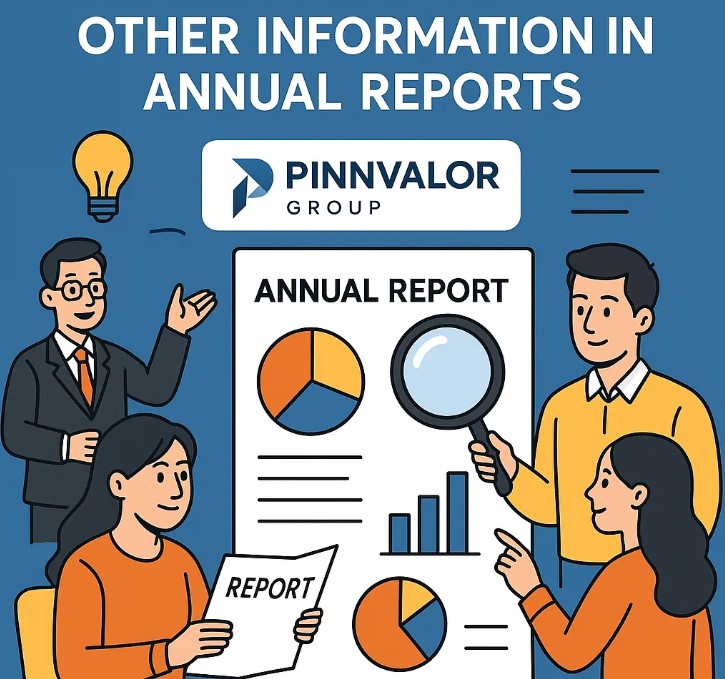
SA 720 – Other Information in Annual Reports: A Detailed Overview
In the complex landscape of financial reporting, annual reports are a primary source of information for investors, regulators, and other stakeholders. These reports not only contain the audited financial statements but also include a variety of additional disclosures known as “Other Information.” The auditing standard SA 720 (Revised) addresses the auditor’s responsibilities relating to this Other Information.
This blog provides a deep dive into SA 720, explaining its purpose, key requirements, challenges, and practical considerations for auditors.
What role does SA 720 play in safeguarding the credibility of annual reports?
SA 720 guides auditors to spot inconsistencies that might mislead stakeholders. Transparency starts with thorough and responsible auditing.
What is SA 720?
SA 720 – The Auditor’s Responsibilities Relating to Other Information is a standard issued by the Institute of Chartered Accountants of India (ICAI). It is aligned with the International Standard on Auditing (ISA) 720 and focuses on the auditor’s role concerning information in an entity’s annual report that is outside the audited financial statements.
Other Information refers to any financial and non-financial information included in documents containing audited financial statements and the auditor’s report, except the financial statements and the auditor’s report themselves.
Typical examples of Other Information include:
- Management Discussion and Analysis (MD&A)
- Chairman’s Statement
- Corporate Governance Report
- Sustainability or Corporate Social Responsibility (CSR) Report
- Business Overview and Future Outlook
- Risk Management Disclosures
Why is SA 720 Important?
Annual reports serve as a critical communication tool. Stakeholders depend on them to make informed decisions. However, since Other Information is not subject to audit procedures, there is a risk that it might contain errors or inconsistencies which could mislead users.
SA 720 mandates that auditors read and evaluate the Other Information to ensure it does not contain material inconsistencies or misstatements that contradict the audited financial statements. This enhances the overall reliability and credibility of the annual report.
Key Objectives of SA 720
The standard aims to ensure that the auditor:
- Reads and reviews the Other Information to identify any material inconsistencies or contradictions with the audited financial statements.
- Communicates with management and those charged with governance regarding identified inconsistencies or material misstatements in the Other Information.
- Evaluates the implications of such inconsistencies on the auditor’s report and the financial statements.
- Determines whether modifications to the auditor’s report are necessary or if withdrawal from the engagement is required.
Auditor’s Responsibilities Under SA 720
1. Obtaining the Other Information
Auditors should request management to provide the Other Information before issuing the auditor’s report, whenever possible. Timely receipt allows auditors sufficient time to perform their review.
2. Reading and Considering the Other Information
Auditors must carefully read the Other Information to identify material inconsistencies or any information that is materially misstated, i.e., information that is incorrect or misleading when compared with the audited financial statements.
3. Procedures to Identify Material Inconsistencies
Auditors apply their professional judgment to assess whether the Other Information:
- Conflicts with the financial statements or the auditor’s knowledge obtained during the audit.
- Omits important facts or presents misleading information.
If inconsistencies or misstatements are identified, the auditor should investigate and seek clarification from management.

4. Communicating with Management and Governance
The auditor communicates findings related to Other Information to management and those charged with governance. This dialogue helps address and correct any issues before the annual report is finalized.
5. Responding to Uncorrected Material Inconsistencies
If management refuses to correct identified inconsistencies or misstatements, the auditor must:
- Consider the impact on the financial statements and the auditor’s report.
- Determine if a modification to the auditor’s report is warranted, which could include an emphasis of matter or a qualification.
- In extreme cases, consider withdrawing from the audit engagement.
6. Reporting
While SA 720 does not require a separate opinion on the Other Information, auditors include a specific section in the auditor’s report about their responsibilities related to Other Information, enhancing transparency.
Challenges in Applying SA 720
- Timing and Availability: Auditors often face delays in receiving the Other Information, which limits their time to perform a thorough review.
- Diverse Nature of Other Information: The wide variety of disclosures under Other Information requires auditors to possess both financial and non-financial expertise, sometimes demanding knowledge beyond traditional accounting and auditing.
- Communication Barriers: Obtaining timely and candid responses from management and governance bodies can be challenging, especially when disagreements arise regarding inconsistencies.
Practical Tips for Auditors
- Request Other Information early: Coordinate with management to obtain draft annual reports ahead of time.
- Use checklists: Develop standard checklists to ensure all typical Other Information sections are reviewed consistently.
- Document findings thoroughly: Maintain clear records of inconsistencies identified, communications made, and resolutions agreed upon.
- Engage with governance: Build strong relationships with those charged with governance to facilitate open communication.
- Continuous learning: Stay updated on non-financial reporting trends, such as ESG disclosures, to enhance review effectiveness.
Conclusion
SA 720 – Other Information plays a vital role in bridging the gap between audited financial statements and supplementary information presented in annual reports. While auditors do not provide an opinion on Other Information, their review under this standard increases stakeholder confidence by ensuring that no material contradictions or misleading information undermine the integrity of the financial statements.
As reporting requirements evolve and annual reports become more comprehensive, understanding and effectively implementing SA 720 is essential for auditors committed to delivering high-quality audits.
